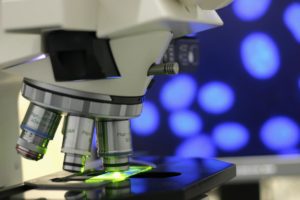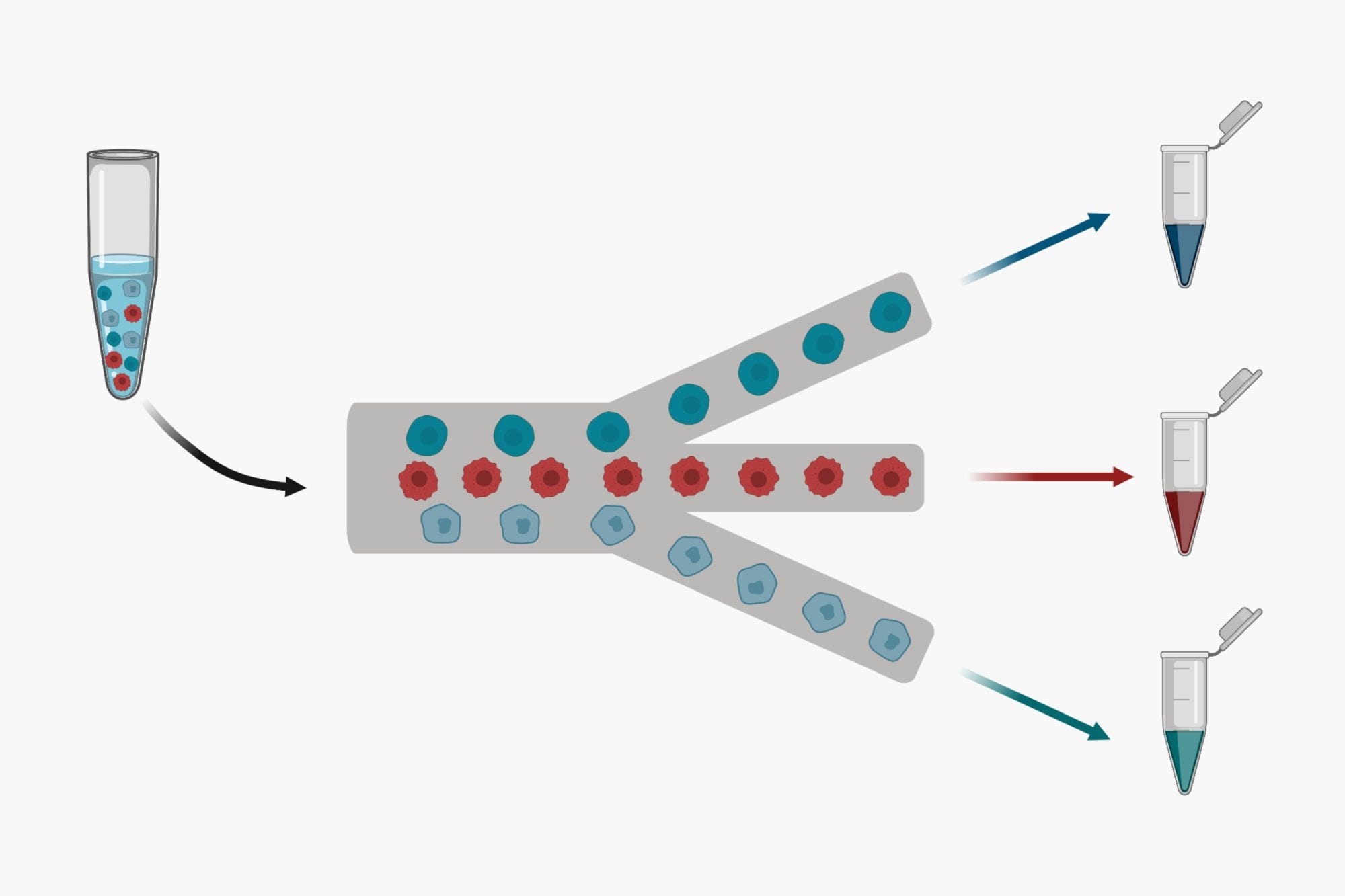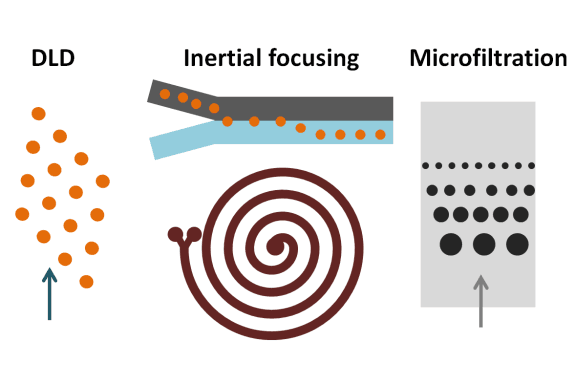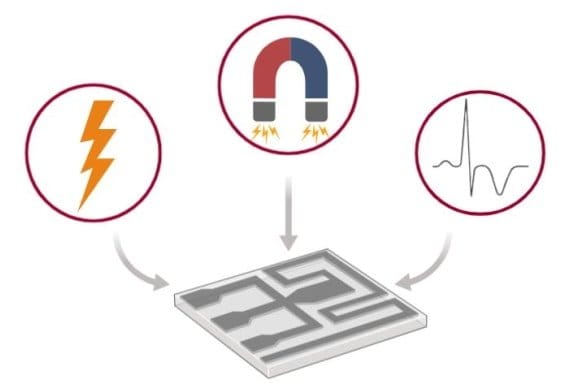Microfluidic cell sorters: Highly accurate, affordable, and customizable cell separation and sorting
 Microfluidics cell sorters are among the most successfully commercialized microfluidic devices. Microfluidic cell sorters are gradually replacing FACS and MACS machines. As opposed to conventional machines, microfluidic chips are affordable, easy to use, and less bulky. These microfluidic devices employ a variety of techniques to sort the cells leading to high speeds and efficiencies compared to the common approaches. The dimensions of the microchip allow a wide range of cell sorters to exist; from large volume cell sorters to precise single-cell sorters. The modularity of the microfluidics chips allows them to integrate with other chips to make more sophisticated systems. For example, a cell sorter can link to a cell dispenser to allow single-cell dispensing.
Microfluidics cell sorters are among the most successfully commercialized microfluidic devices. Microfluidic cell sorters are gradually replacing FACS and MACS machines. As opposed to conventional machines, microfluidic chips are affordable, easy to use, and less bulky. These microfluidic devices employ a variety of techniques to sort the cells leading to high speeds and efficiencies compared to the common approaches. The dimensions of the microchip allow a wide range of cell sorters to exist; from large volume cell sorters to precise single-cell sorters. The modularity of the microfluidics chips allows them to integrate with other chips to make more sophisticated systems. For example, a cell sorter can link to a cell dispenser to allow single-cell dispensing.
Microfluidics based cell sorting is promising both in academic research and industrial level. Modularity and versatility of the chips together with their cost-effectiveness and small footprint make them strong rivals for currently available commercial cell sorters both for laboratory settings and point of care applications.
How do microfluidic cell sorters work?
 Like any other cell sorter or cell separation device, microfluidic cell sorter devices operate based on the difference in a specific parameter. The dimensions at which microfluidic technology operates allow cells to be sorted based on very fine differences in an inherent parameter.
Like any other cell sorter or cell separation device, microfluidic cell sorter devices operate based on the difference in a specific parameter. The dimensions at which microfluidic technology operates allow cells to be sorted based on very fine differences in an inherent parameter.
In general, a cocktail of cells enters the microfluidic chip and run through the microfluidic channels. The microfluidics chip is designed such that the cells with different properties experience a different amount of force while similar cells undergo equal forces. The force could originate from the inertia, geometrical patterns or obstructions in the microchannel, external sources, etc. The difference between these forces differentiates the cells and pushes them onto different streamlines. Next, when the cells are fully differentiated, the outlets are strategically placed so that each cell type exits from a different outlet that can be then collected.
Microfluidic cell sorters are usually categorized into two groups: Active cell sorters and passive cell sorters. In active Microfluidics cell sorters, an external power source affects the cells and forces them to differentiate. This external force could be electric, acoustic, magnetic, etc. On the other hand, passive cell sorters do not need any external force; they rely on the internal forces or geometrical patterns within the microchannels for separating the cells.
What are the advantages of microfluidic cell sorters over conventional methods?
There are numerous advantages to using Microfluidics chips for cell sorting and cell separation. Thus, microfluidic cell sorters are getting very popular among biology researchers. As opposed to conventional cell sorters such as fluorescently activated cell sorter (FACS) or magnetically activated cell sorter (MACS) systems, microfluidic cell sorters normally operate in a much smaller space. The chips normally fit in the palm of a hand and eradicate the need for bulky pieces of equipment. Additionally, the widely used microfluidic fabrication processes make it affordable to make and test prototypes and also make mass-production cost-effective. The cost to purchase microfluidic cell sorters is much lower than the conventional FACS systems which can bring a cell sorter to any lab or clinic affordably.
In conventional techniques, usually, one or multiple steps of sample preparation are required for cell sorting or cell separation. This lengthens the process and increases the risk of cross-contamination. The reagents and the biological suspensions need to be manipulated and modified to be prepared for cell sorting. However, microfluidic technology usually requires minimal sample preparation. In most cases, the microfluidics chips can be integrated and connected to each other to allow on-chip sample preparation.
Microfluidics is known to deal with small sample volumes. The channels are in micron-scale and thus can operate with sample volumes of a few micro liters. The small sample volume can be essential when isolating a target sample is cumbersome and separating a large sample volume is not feasible. Also, the small volume and low reagent consumption can significantly reduce the cost of the test by omitting the need for large volumes of expensive materials. – A uFluidix content.
Learn more about the passive microfluidic cell sorting techniques such as inertial focusing, DLD, and microfluidics filteration
Read more on how active microfluidic cell sorters are used for efficient and highly accurate sorting of biological cells




